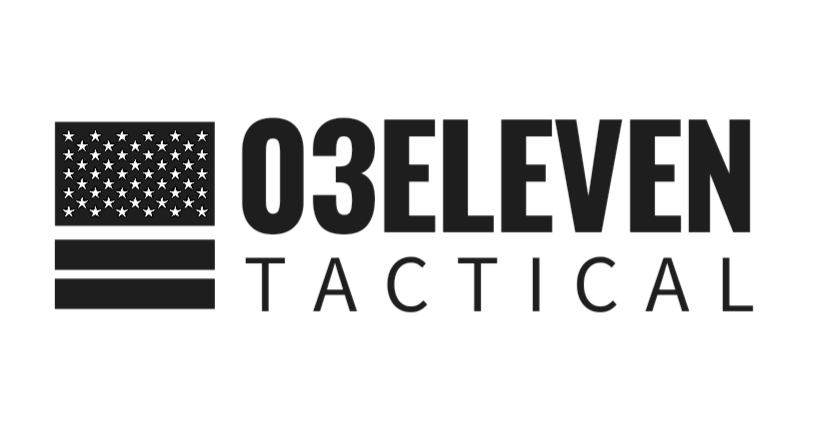The Warrior Mindset: Why Context-Appropriate Training Saves Lives
When seconds count and children's lives hang in the balance, the difference between hesitation and decisive action isn't just training—it's the right kind of training. Since Columbine changed everything in 1999, we've witnessed countless active shooter scenarios where one factor determines the outcome: whether responding officers possess both the tactical skills AND the warrior mindset their mission demands.
At 0311 Tactical, we've spent over a decade and a half bridging the gap between military expertise and civilian law enforcement realities. Because when police officers need to stack up on a classroom door, academic theory won't save lives—but properly contextualized warrior training will.
The Training Crisis Hiding in Plain Sight
Here's what every police commander already knows but can't say publicly: not every officer is wired for high-stakes dynamic entry. Not every graduate walks out of the academy ready to abandon self-preservation to save others.
The numbers tell the story:
Officer applications have dropped 63% in major metropolitan areas since 2020
Academy graduation standards have been lowered in 78% of training facilities nationwide
Average tactical training hours have decreased by 40% over the past decade
Meanwhile, active shooter incidents continue to rise, and the public expects split-second perfection from officers who may have never experienced genuine stress inoculation. And while we cite active shooter incidents, there are a wide range of situations officers may encounter that require a certain mindset and a certain level of training to produce successful outcomes.
This isn't a hiring problem—it's a training evolution problem. And it's exactly why our context-specific methodology produces officers who can seamlessly transition from community policing to combat-ready response.
Beyond the Badge: Understanding the Warrior Mindset
The warrior mindset isn't about aggression or an "us versus them" mentality. It's about controlled, disciplined response under extreme stress. It's the ability to run toward gunfire, and more importantly think towards gunfire, when every human instinct screams to run away.
Some officers develop this naturally. Others need it cultivated through specific training protocols that most agencies simply don't provide. Our approach recognizes three critical components:
Mental Conditioning: Stress inoculation that prepares officers for the psychological reality of violence Tactical Proficiency: Skills that become automatic under pressure, not just checkbox training Contextual Application: Understanding when and how to activate warrior protocols without compromising community relationships
The key difference? We don't just teach tactics—we develop the mindset that makes tactics effective when lives depend on it.
The Liability of Inadequate Preparation
Poorly prepared officers don't just freeze in critical moments—they create cascading legal and public relations disasters that haunt departments for years. When officers lack proper stress conditioning, they make split-second decisions based on fear rather than training.
Consider the real cost of inadequate preparation:
Civil litigation from hesitation-related casualties
Public trust erosion after high-profile failures
Officer PTSD from traumatic encounters they weren't mentally prepared for
Career-ending mistakes that proper training could have prevented
It is our firm belief that the vast majority of controversial police uses of force and inappropriate uses of force are not the result of “bad cops” or cops looking to brutalize certain segments of society. They are most often the result of poor training and the bad tactics and decisions that are born out of that training.
Our training methodology specifically addresses these liability concerns by ensuring officers can perform under pressure while maintaining judgment and legal compliance.
Our hybrid approach leverages military expertise while adapting it specifically for civilian law enforcement realities:
Scenario-Based Training: Real situations police officers actually face, not generic cookie cutter operations
Legal Integration: Every tactic taught within current use-of-force guidelines and case law
Community Considerations: Balancing warrior readiness with community policing responsibilities
The result? Officers who can seamlessly transition from checking on elderly residents to making dynamic entry on armed suspects—with the appropriate mindset for each situation.
Building Warriors, Not Weapons
The most effective police officers aren't the most aggressive—they're the most controlled. They understand when to deploy a warrior mindset and when to dial it back.
This is why our training emphasizes:
Situational awareness that recognizes when warrior protocols are needed
Tactical flexibility that adapts to evolving threats
Stress management that prevents warrior mindset from becoming the default setting
Team dynamics that maximize unit effectiveness under pressure
The goal isn't creating officers who see every interaction as a potential gunfight. It's developing professionals who can access warrior capabilities when circumstances demand it, then return to community-focused policing seamlessly.
Your Next Move
Every police commander should know their officers’ capabilities and limitations. The question is: are you confident your officers will perform when children's lives depend on it?
Our assessment process identifies exactly where your current training gaps exist and provides specific solutions that fit your department's needs, budget, and community context. We don't just point out problems—we fix them with measurable, sustainable training protocols.
Ready to evaluate your team's tactical readiness?
Schedule a confidential assessment call where we'll discuss:
Your current training challenges and objectives
How our methodology addresses your specific operational requirements
A customized training plan that enhances capabilities without creating liability
Because when the moment of truth arrives, "good enough" training isn't good enough.
What's the biggest training gap you've identified in your current tactical preparation? Share your thoughts in the comments or reach out directly—every conversation helps us refine training that saves lives.

